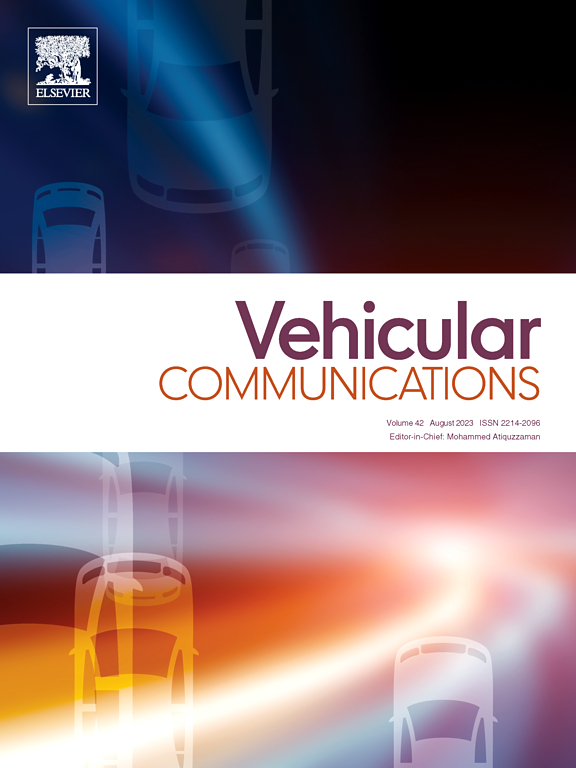确保不可预见的安全:用动态蜜罐和攻击率分析增强VANET安全性
IF 6.5
2区 计算机科学
Q1 TELECOMMUNICATIONS
引用次数: 0
摘要
解决已知威胁构成了网络安全防御的基础层。然而,真正的挑战出现在预测和减轻不可预见的攻击。当前的安全方法可以很好地应对熟悉的威胁,但往往难以应对新的或不可预见的攻击。本文研究了信任管理系统(TMS)中的信任起源,将其与网络攻击率联系起来,从而改进信任评估和预测新的攻击。我们将机器学习(ML)算法与蜜罐相结合,为车载自组织网络(vanet)提供全面的防御,擅长通过攻击率分析检测预期和意外攻击。我们的方法通过检查其识别已知攻击的能力来评估网络的安全状态,称为准备攻击。随后,这些信息将作为预测未来仍需要识别的攻击的基础,称为未准备的攻击。通过广泛的测试,我们证明了双重策略的可行性,该策略包括检测准备好的攻击和预测未准备的攻击。实验结果显示,在预测未准备的攻击方面有显著的改进,证明了提高的准确性、精确度和召回率。此外,我们进行实验,以确定蜜罐的最佳部署,以获得最大的效率。本文章由计算机程序翻译,如有差异,请以英文原文为准。
Securing the unforeseen: Enhancing VANET security with dynamic honeypots and attack rate analysis
Addressing known threats constitutes the foundational layer of cybersecurity defenses. However, the real challenge emerges in anticipating and mitigating unforeseen attacks. Current security methodologies work well against familiar threats but often struggle with new or unforeseen attacks. This paper examines the Trust Origin within Trust Management Systems (TMS) by linking it to the network attack rate, thereby refining trust assessments and predicting new attacks. Combining Machine Learning (ML) algorithms with honeypots, we offer a comprehensive defense for Vehicular Ad-hoc Networks (VANETs), adept at detecting anticipated and unexpected attacks through attack rate analysis. Our methodology evaluates the network's security status by examining its ability to identify known attacks, referred to as prepared-for attacks. Subsequently, this information serves as a foundation to predict future attacks that still need to be identified, termed unprepared-for attacks. Through extensive testing, we demonstrate the viability of a dual strategy that encompasses the detection of prepared-for attacks and the prediction of unprepared-for ones. Experimental results reveal a significant improvement in predicting unprepared-for attacks, evidenced by enhanced accuracy, precision, and recall. Additionally, we conduct experiments to determine the optimal deployment of honeypots for maximum efficiency.
求助全文
通过发布文献求助,成功后即可免费获取论文全文。
去求助
来源期刊

Vehicular Communications
Engineering-Electrical and Electronic Engineering
CiteScore
12.70
自引率
10.40%
发文量
88
审稿时长
62 days
期刊介绍:
Vehicular communications is a growing area of communications between vehicles and including roadside communication infrastructure. Advances in wireless communications are making possible sharing of information through real time communications between vehicles and infrastructure. This has led to applications to increase safety of vehicles and communication between passengers and the Internet. Standardization efforts on vehicular communication are also underway to make vehicular transportation safer, greener and easier.
The aim of the journal is to publish high quality peer–reviewed papers in the area of vehicular communications. The scope encompasses all types of communications involving vehicles, including vehicle–to–vehicle and vehicle–to–infrastructure. The scope includes (but not limited to) the following topics related to vehicular communications:
Vehicle to vehicle and vehicle to infrastructure communications
Channel modelling, modulating and coding
Congestion Control and scalability issues
Protocol design, testing and verification
Routing in vehicular networks
Security issues and countermeasures
Deployment and field testing
Reducing energy consumption and enhancing safety of vehicles
Wireless in–car networks
Data collection and dissemination methods
Mobility and handover issues
Safety and driver assistance applications
UAV
Underwater communications
Autonomous cooperative driving
Social networks
Internet of vehicles
Standardization of protocols.
 求助内容:
求助内容: 应助结果提醒方式:
应助结果提醒方式:


